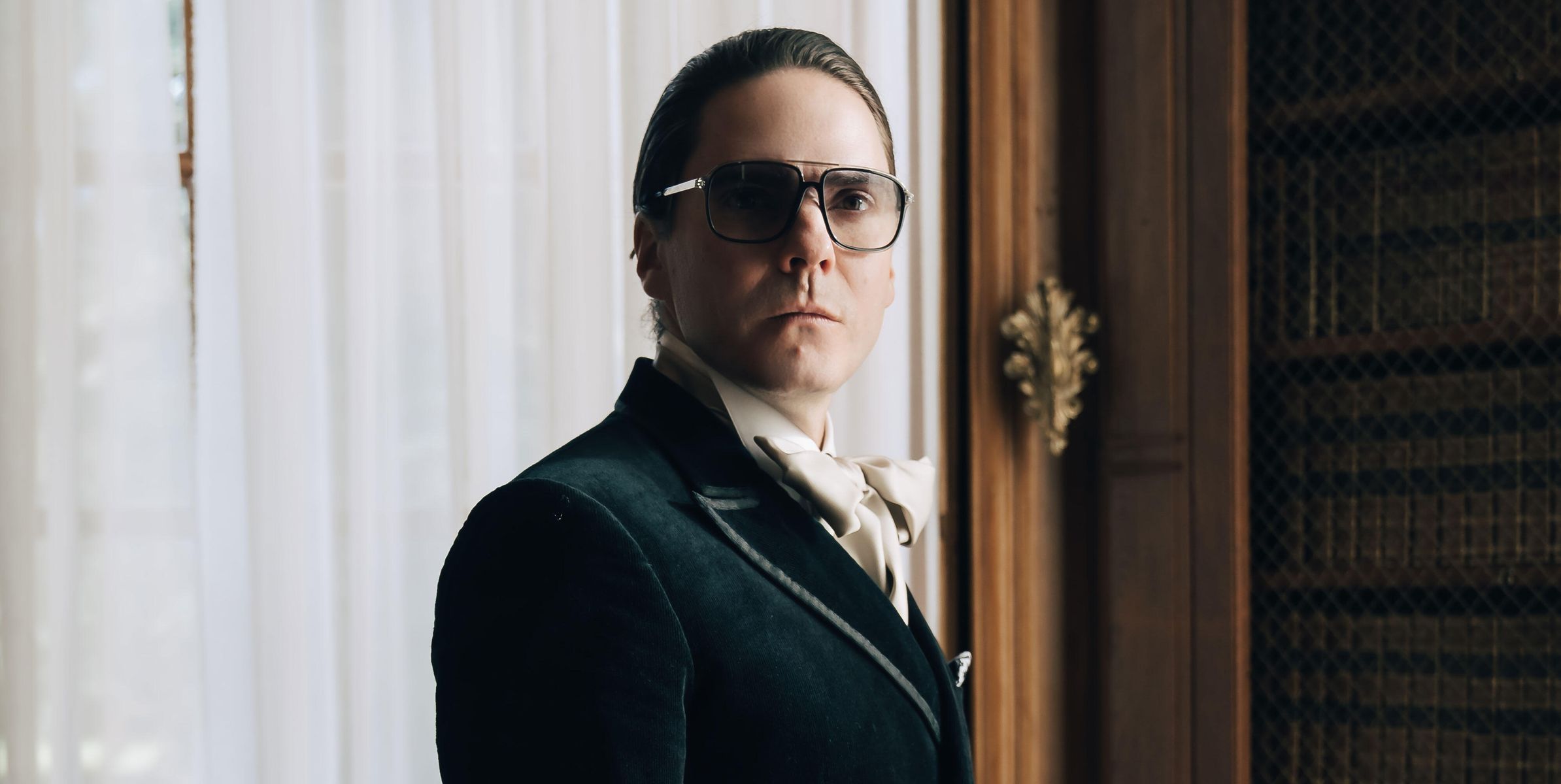
"BECOMING KARL LAGERFELD" SHOWS US A DIFFERENT SIDE OF THE DESIGNER
Few fashion personalities have ever perfected the art of the signature look better than the late Karl Lagerfeld. The mere mention of his name conjures up an instantly unforgettable image: a shock of white hair, fingers bedecked with silver jewelry, severely high-collared shirts, and strict black tailoring.
But in the new French-language series Becoming Karl Lagerfeld, available now on Disney+, we see a different side to the designer. Drawing on the earlier part of his career, we watch a young Lagerfeld navigate the cutthroat world of 1970’s Parisian haute couture. And while his costume may not be quite as pronounced as it became in his later years, there are still flashes of the Lagerfeld-to-come that we all knew and loved: strict tailoring, sunglasses, a sleek ponytail, and a taste for bourgeoisie Parisian style.
Here, we caught up with French costume designer Pascaline Chavanne to unpack precisely how she brought this iconic character to life on screen through costumes—and what she learned about the real Karl Lagerfeld along the way.
Tell me about your research process for this production.
We were always concerned about accuracy, and we always start by doing research worthy of an archaeologist. I really need to know the historical background in order to be able to emancipate myself from it with full knowledge of the facts, and to create my own universe for the story. In this case, it was a matter of building a setting around the future great creator in the making, and showing the way he takes inspiration from it in his creations.
Which sources did you turn to in order to achieve that?
We used everything that exists to recreate Lagerfeld’s world: sketches, color charts, photos of art, fashion and the latest news, more intimate photos of each character who has existed but also of the actors who will embody them, screen captures of documentaries, films, fabric samples. Inspiration can be found everywhere, but also in reading books like “Beautiful People” by Alicia Drake, and “Éloge de la chute,” a collection of photography and text by [Lagerfeld’s longtime companion] Jacques de Bascher’s great friend Philippe Hertault. Those books are full of inspiring information. Then, with my team, we put everything into making this universe.
Over the course of his life, Karl Lagerfeld became very well known for his signature “look”—hair, high collars, jewelry, black suiting, so forth.
To be honest, I didn’t have to develop this look, because in the series we show a younger Karl Lagerfeld, one who is still trying to find himself and is still influenced by pop and color.
For the fashion shows and atelier scenes depicted in the show—did you copy real looks that Lagerfeld created, or did you take liberties?
Let’s just say we tried to be as close to reality as possible, while taking a few liberties. In collaboration with Maison Chloé, we carried out detailed research based on photo archives (all in black and white), descriptions of the fashion shows held at that time and a few authentic pieces. All this allowed us to work out the color range and motifs, and then print the fabrics for Gaby Aghion’s and Karl’s shirts, before cutting and manufacturing them in our workshops.
What was the most challenging look to “get right” and why?
No look is more difficult than another. My challenge was to find the right costumes to help Daniel Brühl embody KarlLagerfeld, and Theodore Pellerin to embody Jacques de Bascher, and the same goes for all the actors. My aim is not to copy an existing photo, but to use clothing to give an actor the right tools to embody his character.
Why do you think viewers are so fascinated by “fashion stories” such as Becoming Karl Lagerfeld?
Perhaps because we’re experiencing a crucial moment in the emancipation of women and the question of gender, and fashion is as much a part of this as it reflects changing mentalities. Telling the story of fashion also means telling the story of the emancipation of women and women’s bodies through history. It’s an echo of what’s happening right now: the liberation of speech. Fashion is a social phenomenon that concerns us all, even if we’re not always aware of it.
What did costuming this show teach you about Karl Lagerfeld’s work that you might not have known before?
Until he started working for Chanel, I didn’t have a very clear vision of his work. I realized that working for all these different houses had forced him to constantly renew himself and had enabled him to experiment with a multitude of styles. Not having one style but many was his strength and freedom. I love this quote from Lagerfeld: “Appetite comes from eating, ideas from working.”
This interview has been edited and condensed for clarity.
2024-06-28T17:56:57Z dg43tfdfdgfd